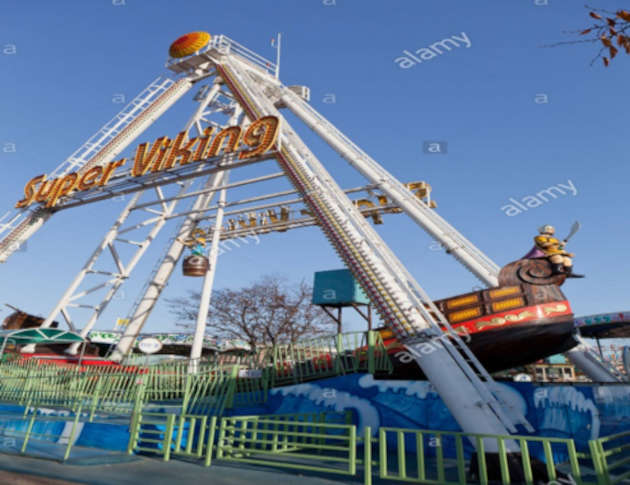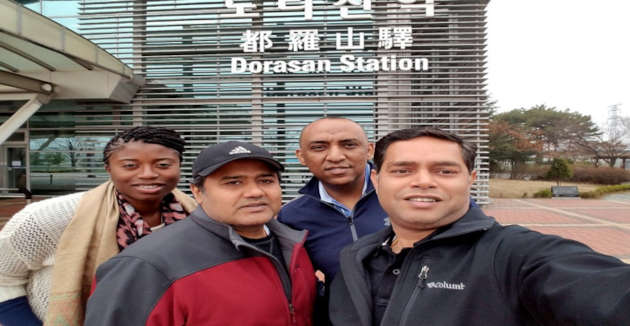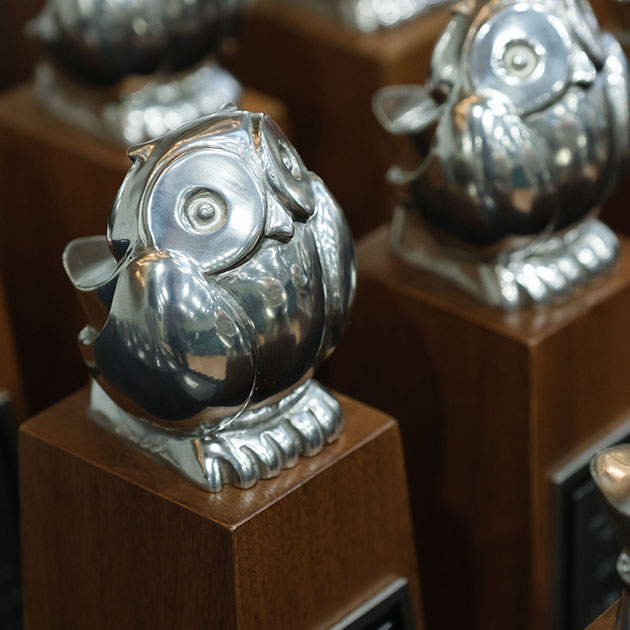
On our last day in South Korea, we enjoyed a cultural tour to the Demilitarized Zone (DMZ). The DMZ, effectively a 2.4-mile-wide, cease-fire zone that runs along the border of North and South Korea for approximately 150 miles (the width of the peninsula).
As the international study tour twilights toward completion, we will travel back in time for a brief history lesson on the DMZ.
The Korean War
On June 25, 1950, North Korea invaded South Korea. Thirteen hundred residents of Paju City, not including military personnel, lost their lives that day. Nearly overnight, 16 countries from around the world converged on the conflict to aid South Korea. A total of 36,574 American soldiers and 2.23 million Koreans lost their lives in the three-year war. The DMZ marked the end of war and the beginning of a long period of separation between the North and the South.
This separation continues to this day, where we find ourselves in a bus, pulling into what could be described as a very miniature state fair of Texas. Instead of fried bacon and fried Snickers, this attraction served fried silkworm.
More importantly, a clear cultural interchange had clearly taken place between Koreans and Americans. The swinging pirate ship ride was proof of the globalization that was sailing in front of our eyes.
Nuri Peace Park

The Nuri Peace Park came full service with a peace “bell” among many other attractions. As we exited our bus, we had roughly an hour of exploration time before we were to board another DMZ specialty tour bus.
During our hour at Nuri Peace Park, the memorial and significant amount of capital infrastructure upgrades were easily recognized. The slogan for the peace park is “reunification,” and the South Koreans truly hope and believe that day is coming sooner rather than later.
Observation Deck

We departed the peace park for the observation deck, which was essentially a watchtower maintaining the security of the DMZ.
The redeeming quality of the observation deck came when the North Koreans began playing a form of classical music over their public-address system. It could be heard while we were on the lookout area of the observation deck. Naturally, the South Koreans had to respond, so our observation deck began blaring some pretty bad “pop” music.
Once the battles of the speaker systems were complete, we departed to the train station, but not before a covert photo op of a North Korean checkpoint by one of our more daring teammates.
Dorasan Train Station

Dorasan Station, a railway station on the Gyeongui Line, is the northernmost stop on South Korea’s railway line. Located 56 kilometers from Seoul and 205 kilometers from Pyongyang, the station was opened as a tourist attraction in April 2002.
We were given a 15-minute window to walk around the train station and get a “stamp” on a piece of paper validating that we had made it to the stop.
There was a grand piano in the main terminal of the train stop, which instead of normal piano strings, boasted barbed wire strings instead. This piano was to serve as one of the many instruments of reunification of Korea.
We snapped a few photos and quickly hurried on to the bus for our final stop, the Tunnels.
The Tunnels
Since 1974, South Korea discovered four tunnels that cross the DMZ. The tunnels were dug by the North Koreans and are believed to part of a planned military attack on South Korea. North Korea has claimed that the tunnels were for coal mining although no coal has ever been found in the tunnels.
First Tunnel
Discovered in November 1974, it is approximately 3-by-4 feet in dimension and extends more than half a mile beyond the Military Demarcation Line into South Korea.
Second Tunnel
Discovered in March 1975, it is approximately 7-by-7 feet in dimension and extends more than half a mile beyond the MDL into South Korea.
Third Tunnel
Discovered in October 1978 following a tip from a North Korean informant, the tunnel is approximately a mile long.
Fourth Tunnel
Discovered in March 1990, it is approximately 7-by-7 feet in dimension and extends more than half a mile beyond the MDL into South Korea. South Korea has sealed the tunnel at the South and North Korea border.
The group visited the Third Tunnel. Not all members of the group participated or completed the tunnel tour due to physical exertion or claustrophobia. Everyone needed a safety hat to enter because some parts of the tunnel have low, jagged ceilings and uneven, jagged sides. As you entered the tunnel, it sloped significantly, causing pressure on knees and requiring one to shift weight backward.
About midway, the tunnel leveled off and narrowed significantly. If you were taller than 5-foot–8, you had to crouch while making the short trek. It was a cold and wet pathway that led to a sealed-off wall, with North Korea on the other side.
You then had to make a U-turn and head out the way you came in. The walk up required physical exertion once you made it to the slope. We suggest pacing yourself and make the journey quicker than slower so as not to prolong the journey upward.
In that vein of onward and upward, the DMZ tour was a true cultural experience that we will not forget and strongly urge those who travel to South Korea in the future to seek out a similar tour.
– Written by: Omer Abrar, Imraan Husain, Janeth Okoronkow, Howard Patty, Sam Van Amburgh and Kirt Williams




